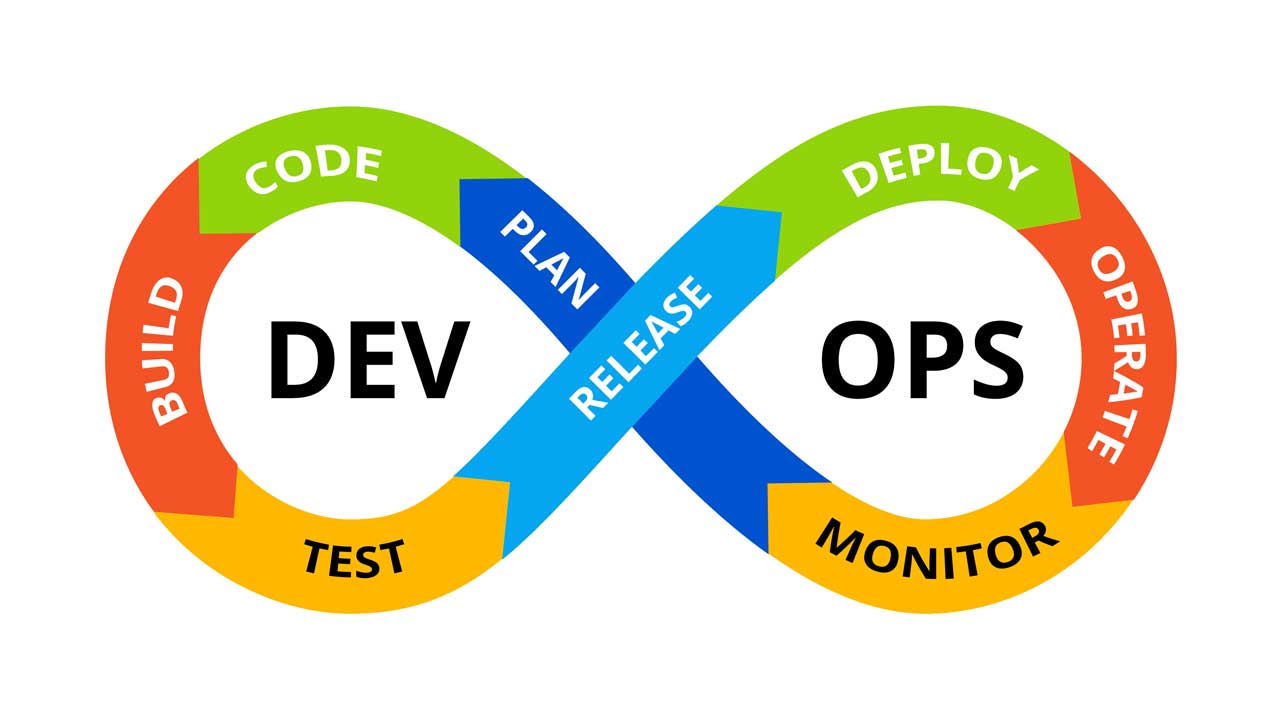Software development has become an integral part of businesses across various industries. With the increasing demand for quick and efficient delivery of products and services, the need for a streamlined software development process is more pronounced than ever. This is where DevOps solutions come into play.
DevOps, a fusion of Development and Operations, is an innovative approach that emphasizes the collaboration and communication between software developers and IT operations. It’s a practice that not only unites these two traditionally siloed teams but also incorporates automation, monitoring, and feedback loops to expedite the Software Development Life Cycle (SDLC) and facilitate continuous delivery.
Table of Contents:
Understanding DevOps
DevOps can be compared to a project management system that encourages collaboration, ensures clarity in plans, and optimizes resource allocation to facilitate a faster and more efficient construction process. In essence, DevOps is a strategy that promotes a culture of seamless collaboration and continuous improvement.
Collaboration in DevOps
At the heart of DevOps lies the principle of collaboration. By uniting software developers and IT operations teams, organizations can leverage the unique skills and perspectives of each group to create superior software. Developers bring their expertise in coding and creating new features, while operations teams possess a deep understanding of infrastructure and system stability. When these teams cooperate, they can build software that is not only functional but also scalable and reliable.
Integration in DevOps
Integration is another crucial aspect of DevOps. By merging development and operations processes, organizations can ensure seamless deployment and testing of changes made to the software, thereby reducing the risk of introducing bugs or errors into production environments. Continuous integration and continuous deployment (CI/CD) pipelines are commonly used in DevOps to automate the process of building, testing, and deploying software.
Automation in DevOps
Automation is a critical component of DevOps. By automating repetitive and time-consuming tasks, organizations can free up their teams to focus on more value-added activities. Automation tools, such as configuration management systems and infrastructure-as-code frameworks, enable teams to define and manage their infrastructure and application configurations in a consistent and reproducible manner. This not only improves efficiency but also reduces the risk of human error.
DevOps Services: Transforming Software Development Operations
DevOps services aim at transforming the traditional software development operations by incorporating a set of practices and principles that automate and integrate the processes between software development and IT teams. These services help organizations evolve and improve their products at a faster pace than organizations using traditional software development and infrastructure management processes.
The Role of DevOps in Streamlining Development Operations
DevOps services play a crucial role in streamlining the software development operations by fostering a culture of collaboration and integration between the development and operations teams. They facilitate the automation of the software delivery process, thereby accelerating the time to market and enhancing the quality of the product.
The Impact of DevOps on Business Efficiency
DevOps is not just about improving software development; it also has a significant impact on the overall efficiency and effectiveness of businesses. By automating processes and fostering collaboration, organizations can reduce time-to-market and respond quickly to changing customer needs. This speed and agility give businesses a competitive edge in the market.
The Role of DevOps in Cloud Computing
DevOps plays a crucial role in leveraging the benefits of cloud infrastructure by enabling organizations to quickly and efficiently deploy software in cloud environments. The scalability and flexibility offered by the cloud align well with the principles of DevOps, resulting in faster and more reliable software delivery.
The Evolution of DevOps
DevOps didn’t emerge overnight; it has evolved over time, driven by the need for efficient software development practices and the increasing complexity of modern software systems. The evolution of DevOps has been a response to the challenges faced by software development teams in delivering high-quality software in a fast-paced and ever-changing environment.
Origins of DevOps
The origins of DevOps can be traced back to the Agile methodology, which emphasized iterative and incremental software development. Agile practices introduced the concept of close collaboration between developers and stakeholders, leading to improved software quality and faster delivery times. However, Agile alone was not enough to address the challenges of delivering software in complex and dynamic environments. Development teams faced difficulties in integrating their code changes, coordinating with operations teams, and ensuring smooth deployments. These challenges paved the way for the evolution of DevOps.
Key Milestones in the Evolution of DevOps
Several key milestones have shaped the evolution of DevOps. One notable development was the introduction of Continuous Integration (CI), which involves merging code changes into a shared repository and automatically testing them to detect integration issues early on. This allowed developers to catch and fix bugs quickly, leading to more reliable software.
Introducing DevOps in Your Organization
Introducing DevOps in an organization requires a strategic approach that involves cultural change, process redesign, and the adoption of new tools and technologies. A successful DevOps transformation entails a shift from siloed working to cross-functional collaboration, from manual processes to automation, and from reactive problem-solving to proactive issue prevention.
DevOps Implementation: A Case Study
Consider a startup planning to develop a sales platform. They would begin with requirement gathering and analysis, followed by planning, designing, and coding. After deployment, they would conduct thorough checks to ensure the proper functioning of these features and subject their code to rigorous code review processes.
Deploying code changes into an integrated environment can be risky due to potential code conflicts and overwrites. CI/CD pipelines, a key component of DevOps operations, can minimize these risks by providing a platform for seamless integration and deployment of code changes.
Conclusion
In this fast-paced tech world, DevOps solutions are no longer a luxury but a necessity. By embracing DevOps, organizations can improve their agility, efficiency, and customer satisfaction, ultimately gaining a competitive edge in today’s fast-paced tech world. Introducing DevOps into your organization is a journey, but with the right approach and tools, you can ensure a smooth transition and reap the benefits of this transformative approach.

Whether you’re a large enterprise or a small startup, companies like DigitalSuits can provide you with a range of DevOps services tailored to your specific needs. From consulting and strategy to implementation and support, their team of experts can guide you through the DevOps transformation and help you unlock the full potential of your software development operations.
By leveraging the power of collaboration, integration, and automation, DevOps solutions can revolutionize your software delivery process, accelerating your time to market and enhancing the quality, stability, and reliability of your software systems. So, embark on your DevOps journey today and experience the transformative power of DevOps solutions.




